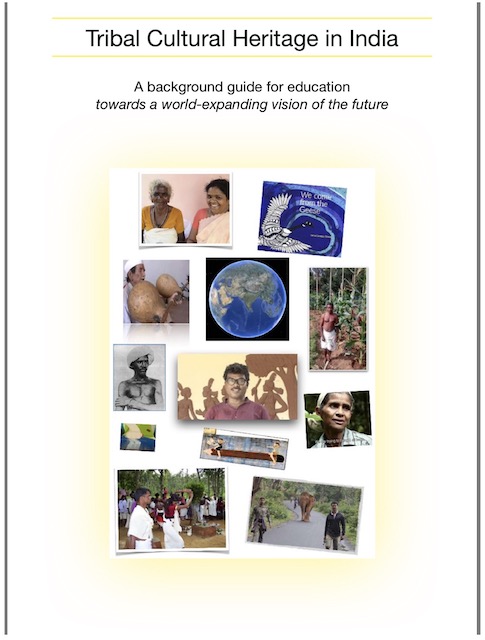“We must consider the environmental dimension of justice now. The challenge of climate change is so enormous that it forces us to redefine ‘rights’.” – Droupadi Murmu | Speeches by the President of India | United Nations on climate change >>
There’s much to learn from the positive contributions made by tribal communities on a daily basis. To start with, let’s learn from insiders and others who have dedicated their lives to ensuring that a precious heritage will continue to make a difference to people from all backgrounds – all over India and even beyond:
“The tribal world and the tribal way is complete in itself.” – Mahasweta Devi quoted by Gopalkrishna Gandhi in “Swearing by Mahasweta” (The Hindu, 6 August 2016)
“[I]t is unimaginable to think of tribes as landless, as land and forest have been traditionally their life support system.” – Virginius Xaxa in Being Adivasi
“It is wrong and does not help the tribal cause either to reduce the image of the Indian tribal society to that of destitute remnants, on the verge of dying out.” – Voices from the Periphery, a multidisciplinary book on “reversing the gaze”

“We have to write our own stories, about our issues, from our own perspectives” – Abhay Xaxa >>
“For us it’s not so much about having a room of one’s own, as a roof over our head [but] affirmation and agency.” – Ruby Hembrom at the Jaipur literature festival
“The goal is to prepare some model students in our villages, so that others will be inspired to follow them.” – Boro Baski in his article “Long-term success of non-formal Adivasi school in West Bengal”
“[The] morungs of the Nagas, the dhumkuria of the Santals and the gotuls of the Gonds [are] equivalents to schooling systems in mainstream societies.” – Subhadra Mitra Channa in Anthropological Perspectives on Indian Tribes (Caravan Magazine, 1 March 2020)
“Santali is not a dead language [and] does not need to be ‘revived’ [being] one of the two tribal languages that have been recognized as official languages.” – Dr. Ivy Hansdak responding to an online magazine story on “reviving the Santali language”
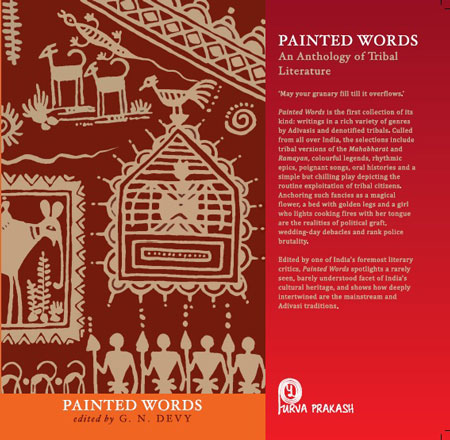
Tribal Literature by G.N. Devy >>
Free eBooks & Magazine: Adivasi literature and languages >>
“Tribals do not exploit other people’s labour for the sake of their own avarice, nor do they destroy nature to build monuments to the human ego. […] It is almost impossible to characterize all of India’s tribals in a single ethnographic or historic framework.” – Ganesh Devy in Painted Words: An Anthology of Tribal Literature
“Adivasi people have an alternative world view, which has rarely been acknowledged or recognized. Their existence was never based on accumulation or consumerism. […] All of us can learn from them. And it’s about time we started.” – Mari Marcel Thekaekara in “Adivasi people: proud not primitive“

Ādivāsi [ādibāsi] may be used in accordance with local conventions; and increasingly so for official purposes (e.g. in “Conserving Tradition and Practices of Adivasi Communities in India” published on NIDM.gov.in); Dr. Ivy Hansdak clarifies:
“Adivasi – which is derived from Sanskrit – is applied to the dark-skinned or Austro-Asiatic indigenous groups of India (usually those from Eastern India). It is a commonly-used term in Jharkhand, Bihar, West Bengal and Odisha. It is also used by the local Mongoloid tribes of North Eastern India for the migrant workers who were brought in as indentured labourers to work in tea plantations during the colonial period. ‘Tribal’ is a very broad term in the English language and includes all the different indigenous groups of India. The terms ‘indigenous’ and ‘aboriginal’ are not used often as the government claims most groups are indigenous in India. ‘Denotified Tribes’ is only used for those nomadic tribes who were notified as ‘criminal tribes’ during the British Raj [colonial rule]; later they were ‘denotified’ but still bear the stigma.” (emails dated 2020 & 2023)
“Adivasi women in post-independence era have suffered because tribes have been assimilated within the dominant patriarchal model [so] we need to rescue tribal narratives from a certain homogenising tendency.” – Vasundhara Gautam analyzing the poetic world of Nirmala Putul in its appropriate socio-cultural milieu
Whether “tribe” is preferred over Adivasi (Adibasi) depends on local conventions, official usage and historical context; see also Classifications in different states and Who are Scheduled Tribes? >>
“In India, the term ‘tribe’ has referred, since the 16th century, to groups living under ‘primitive’ and ‘barbarous’ conditions. The colonial administration used the term to distinguish peoples who were heterogeneous in physical and linguistic traits and lived under quite different demographic and ecological conditions, with varying levels of acculturation and development. In the various countries of South Asia, tribal peoples were often called by derogatory terms such as jungli (‘savage’) during the colonial period.” – Marine Carrin (Centre d’Anthropologie Sociale, Toulouse, France) in her General Introduction to Brill’s Encyclopedia of the Religions of the Indigenous People of South Asia
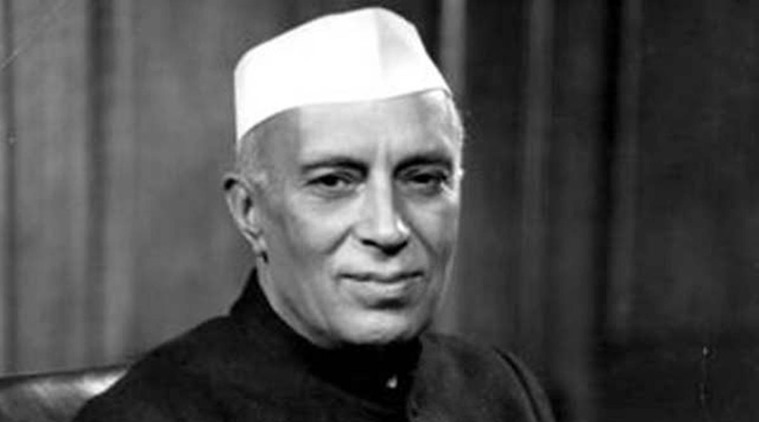
Photo © Indian Express
“Though the Indian constitution envisaged the abolition of ‘untouchability’ and an end to discrimination, prejudice is rampant among the affluent sections of society and those entrusted with upholding the constitution have tended to treat Dalits and Adivasis with utter insensitivity.” – Anurag Bhaskar (Jindal Global Law School, Sonipat and Center on the Legal Profession at Harvard Law School) in “When It Comes to Dalit and Tribal Rights, the Judiciary in India Just Does Not Get It” (The Wire)
“Gandhi believed that giving more importance, value and relevance to practical skills, and applying traditional knowledge to solving day-to-day problems were essential for the development of rural India.” – Bunker Roy, the founder of Barefoot College, which helps rural communities become self-sufficient
“Truth (Satya) implies Love, and Firmness (Agraha) engenders and therefore serves as a synonym for force … that is to say, the Force which is born of Truth and Love or Non-violence. Satyagraha and brute force, being each a negation of the other, can never go together. […] Satyagraha may be offered to one’s nearest and dearest, passive resistance can never be offered to them, unless, of course, they have ceased to be near dear and become an object of hatred to us.” – Mahatma Gandhi on Civil Disobedience and Satyagraha quoted in The Essential Gandhi: His Life, Work, and Ideas
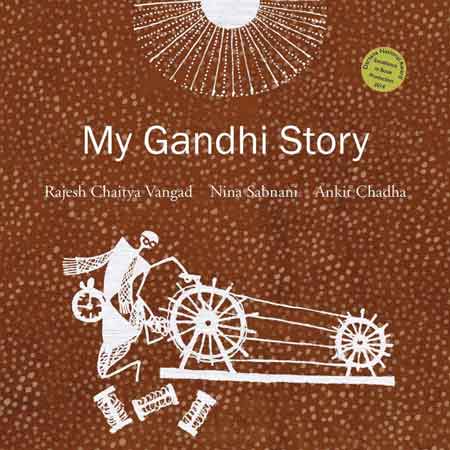
Gandhian social movement | Warli art and culture >>
“Enabling people to learn from each other opens up the possibility of creating learning organisations – where people are learning from each other every day at every level. […] It seems like going back to the way things were done in the past – learning by telling stories, learning by hearing how other people did things.” – Todor Proykov in Scene Magazine
“I would like to direct attention to the general approach when we encounter the ‘other’ – the question of our protocol, etiquette and attitude. In our eagerness to know we probably show a disregard to these civilities. We try to buy friendship for building up rapport; we try to intrude into others’ territory without being invited and carry presents that we perceive would be appreciated to assert our friendliness.” – Anthropologist R.K. Bhattacharya in “The Holistic Approach to Anthropology” >>
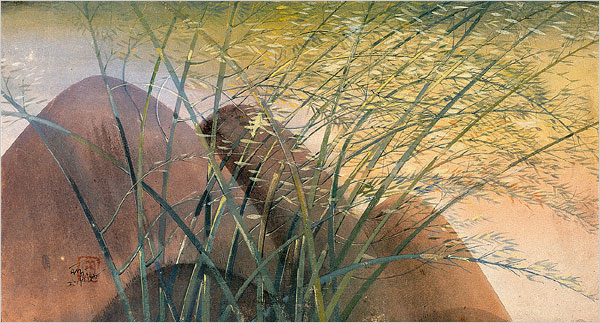
“Bengali literature celebrated the natural, healthy Santal way of living.” – Partha Mitter in The Triumph of Modernism: India’s Artists and the Avant-garde
“But what amazed me was that none of the implements that were being used here were ‘bought’. They were all made by them. And necessity being the mother of invention, you could see innovation at its best. […] In one of the typical Warli houses, the walls were made of Karvi sticks tied together and the roof was made of tiles. This house was much cooler than the concrete structures nearby which were like ovens. But somehow such simple houses were being looked down upon and were being replaced with modern monstrosities. So much for ‘progress’.” – Gangadharan Menon in “You’ve Seen Warli Paintings Before. Now Get Ready To Visit The Warli Tribe & Listen To Their Music” (The Better India)
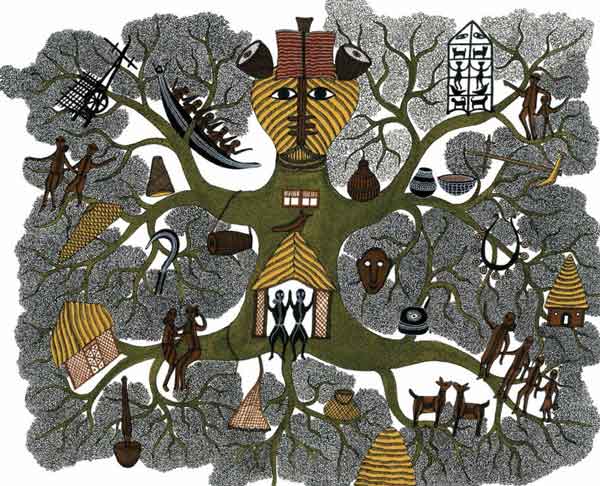
Childhood | Gond art and culture | Trees >>
“[T]he writing of South Asian as well as colonial scholars caricatured tribal communities by misrepresenting or fetishising their existence, and sometimes overcompensating for earlier misunderstandings—all of which further pushed tribes into obscurity. […] I also noticed that tribal people entering academic environments today are distressed by representations of themselves they encounter in texts, and that these sometimes amount to micro-aggressions and various forms of discrimination. For one, tribal people are made to believe that they must give up their value systems, culture, religion, customs and aspirations, and that they must embrace the new order of the nation state to repay the favours done to them until they become self-sufficient through economic upliftment.” – Richard Kamei in “Uncivilising the Mind: How anthropology shaped the discourse on tribes in India” (Caravan Magazine)
“As we are looking for ways of sustainable development, these [tribal] groups can teach us lessons in sustainable development.” – Vice President M. Venkaiah Naidu in “Constitution and Tribes” (First Foundation Day Lecture, National Commission for Scheduled Tribes 2019)
Themes for classroom and self education
As India’s tribal communities are among the most diverse anywhere in the world, teachers and students will benefit from the success stories told by indigenous educators like Dr. Boro Baski and Dr. Ivy Hansdak or publisher Ruby Hembrom: from them we may learn more about new opportunities just as the need for a better understanding of “cultural heritage” while rectifying past mistakes just as present-day misconceptions:
- customs like the maintenance of sacred groves that benefit modern society: medicinal plants preserved in “biodiversity hotspots” for scientific research (ethnobotany, food security in the face of global warming)
- aspirations of tribal youth within and beyond their own communities
- constitutional rights and efforts to avoid “adverse inclusion”
- modern history: how Nehru, Gandhi and Tagore envisioned rural development
- colonial policies: stigmatisation and discrimination (“criminal tribes”) yet to be overcome in educational and other institutions
- linguistic heritage and the value of endangered languages
- proper nutrition and education for young children and women
- rapid changes that affect entire communities (modernity)
- mass media (dignified portrayal of tribal communities)
Simply use the search field, menus and maps found on this website to explore these issues in greater depth.
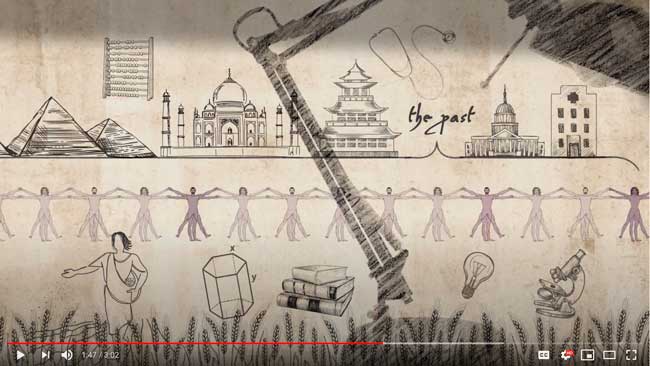
Watch “The Good Ancestor – The Legacies We Leave” (3 min.): An animation that explores the legacies we might leave for future generations >>
Links to some of the most important organisations, thinkers and doers that are leading the way and that have inspired the book The Good Ancestor by Roman Krznaric >>
Find educational and children’s books on tribal culture published in India – Custom search
List of sites covered by this Google custom search engine
https://publicationsdivision.nic.in
To find scholarly books or search Indian periodicals, magazines, web portals and other sources safely, click here >>
Note: hyperlinks and quotes are meant for fact-checking and information purposes only | Disclaimer >>
Find publications by reputed authors (add “open access” for freely downloadable content)
Online resources
- Take a guided tour of this website (online and offline eBook)
- Each tribal community retains its distinct rural culture: A small state with 19 sub-tribes – Tripura
- Explore some of the interactive maps offered on this website (also see below)
- Film and Television Institute of India & Tribal Institute team up: Projecting “the uniqueness of these tribes across the state” – Maharashtra
- Media portrayal
- The People’s Archive of Rural India: Cutting-edge technology and new forms of storytelling to document and reflect the energies of rural Indians
- Search tips | Names of tribal communities, regions and states of India
- Tip | Global Curricula: How to Choose and What to Use – Asia Society’s Partnership for Global Learning
- Video | “Nations don’t make us human – languages make us human”: Ganesh Devy – People’s Linguistic Survey of India
- “We plant the trees for our children in the memory of our elders who planted for us”: Trees are indispensable for India’s tribal communities
